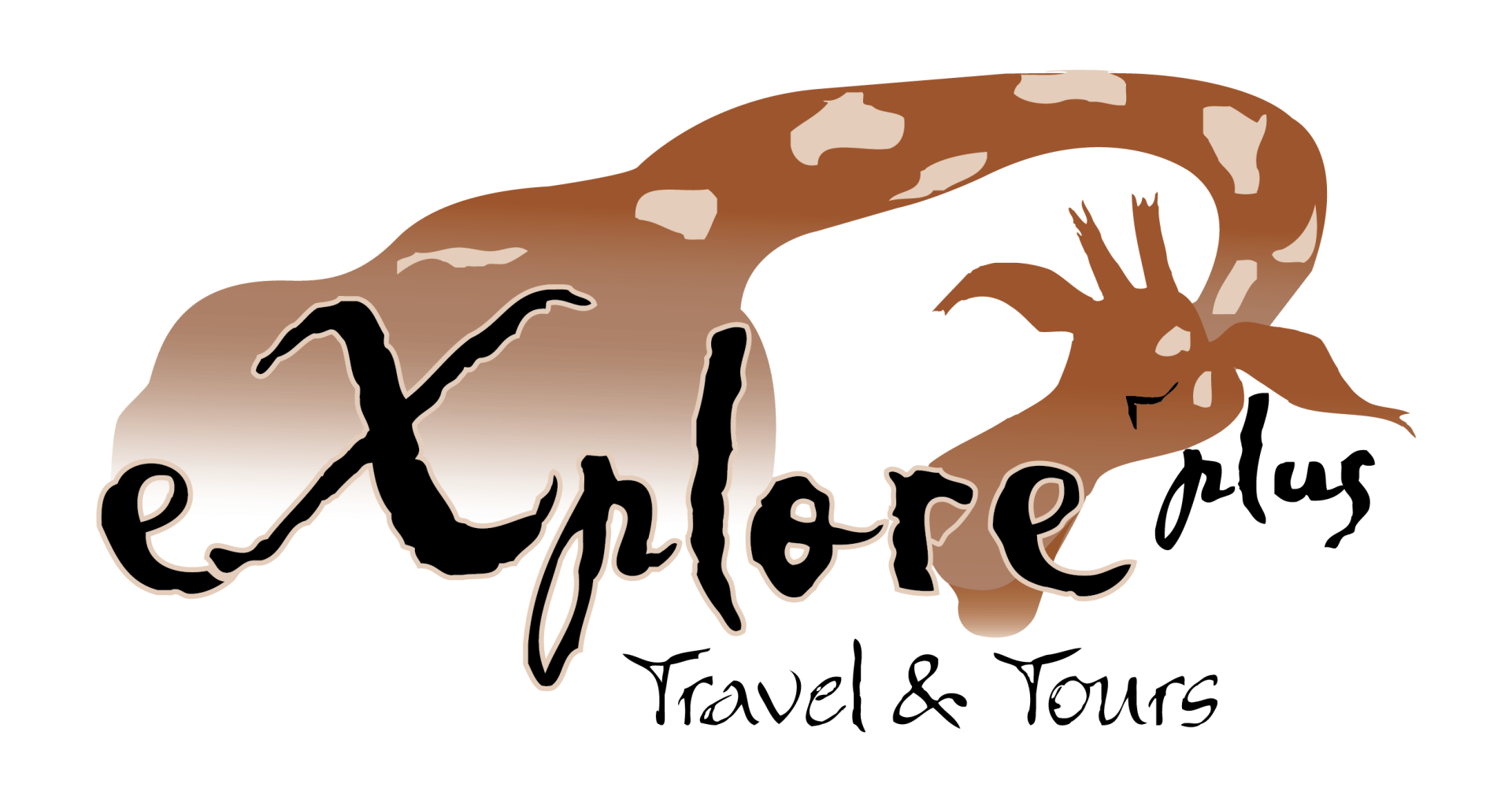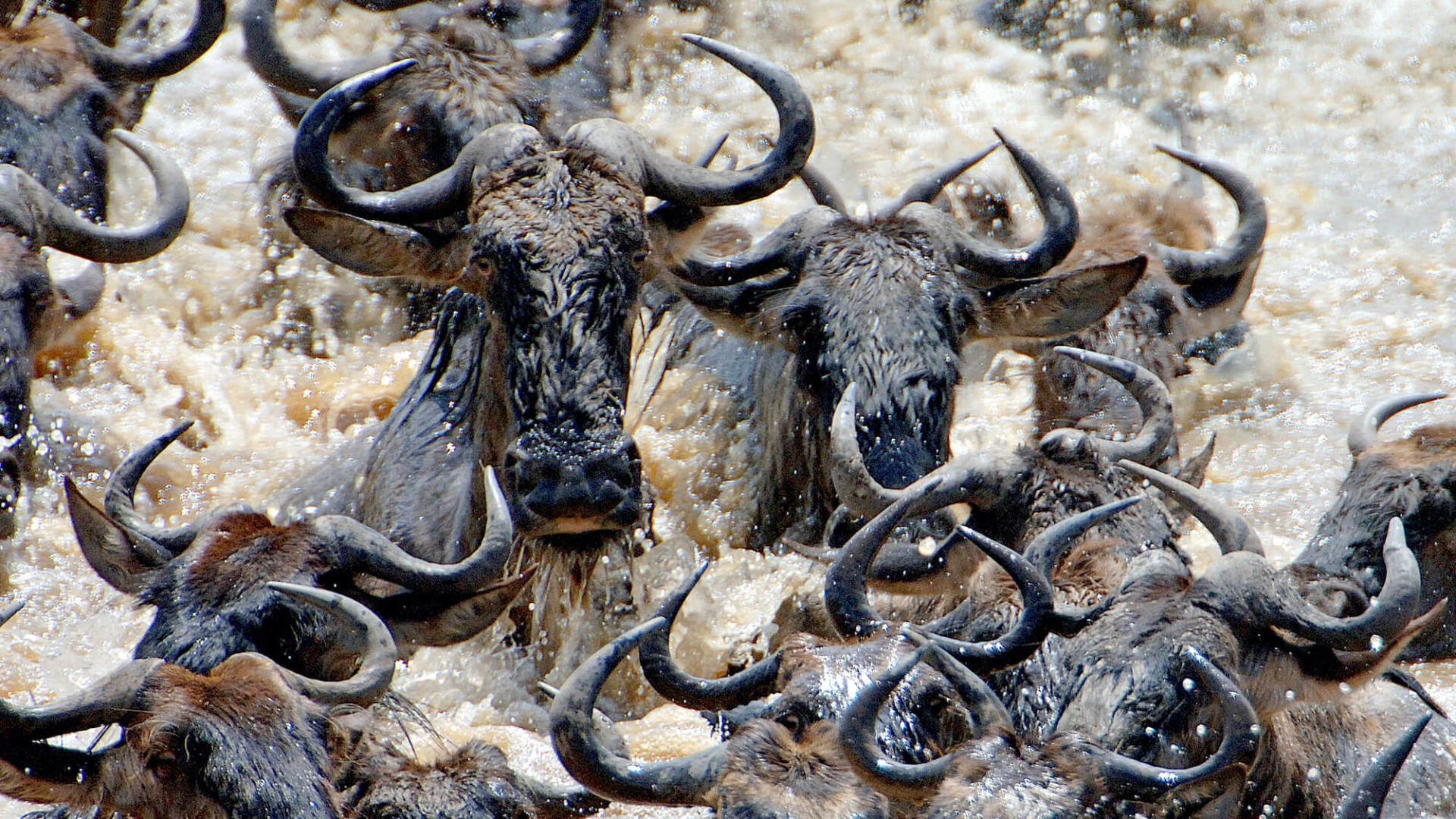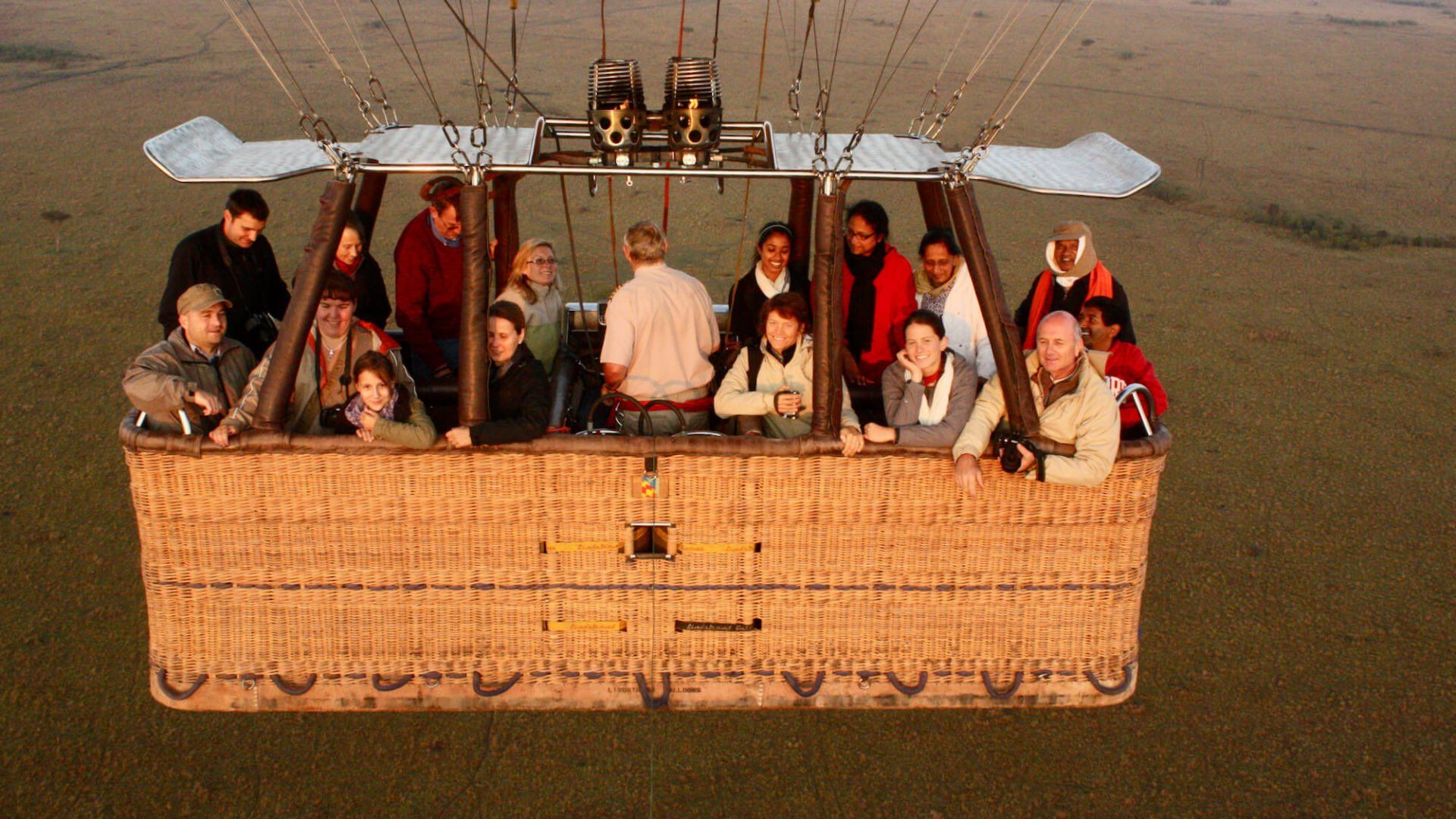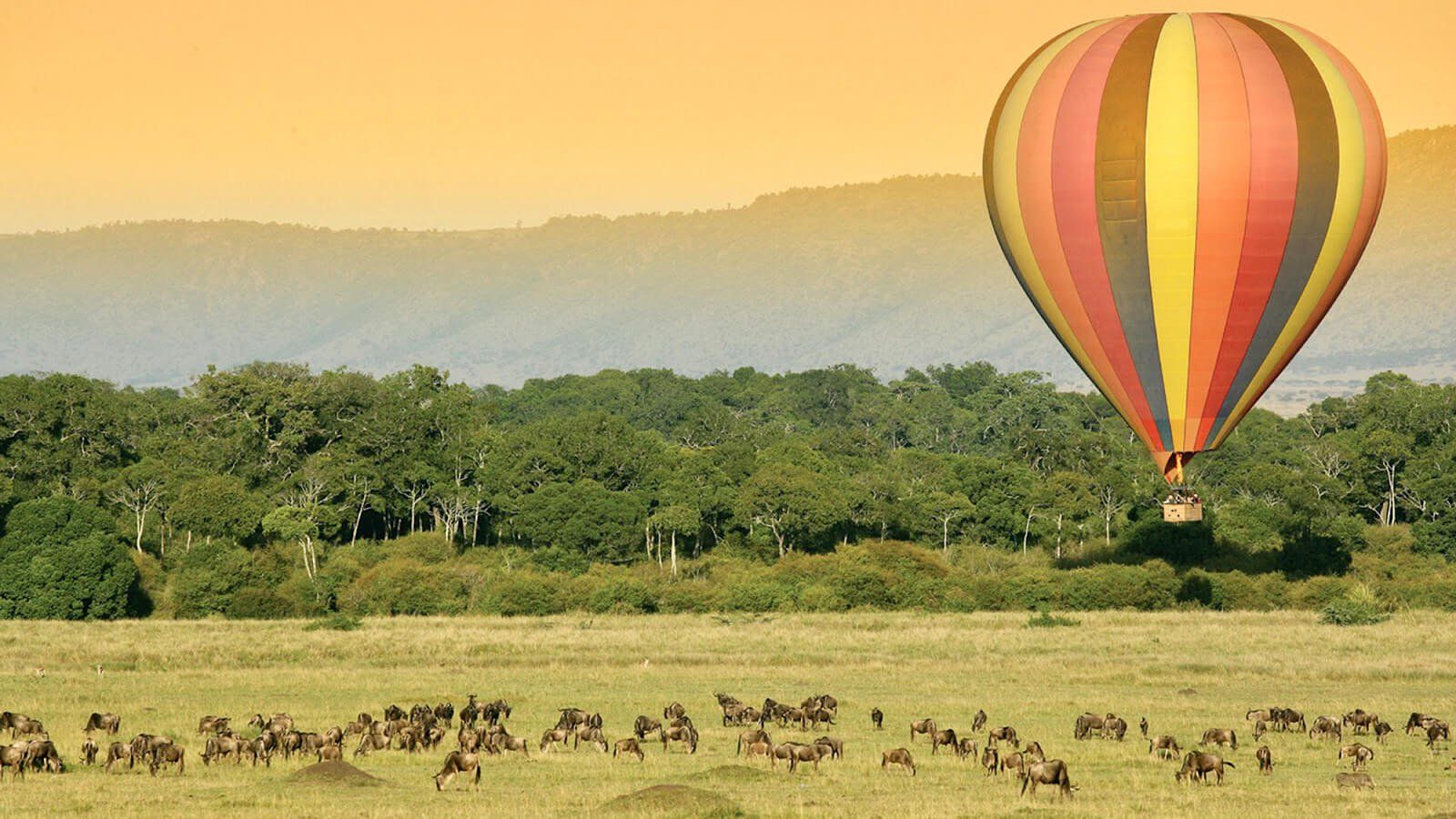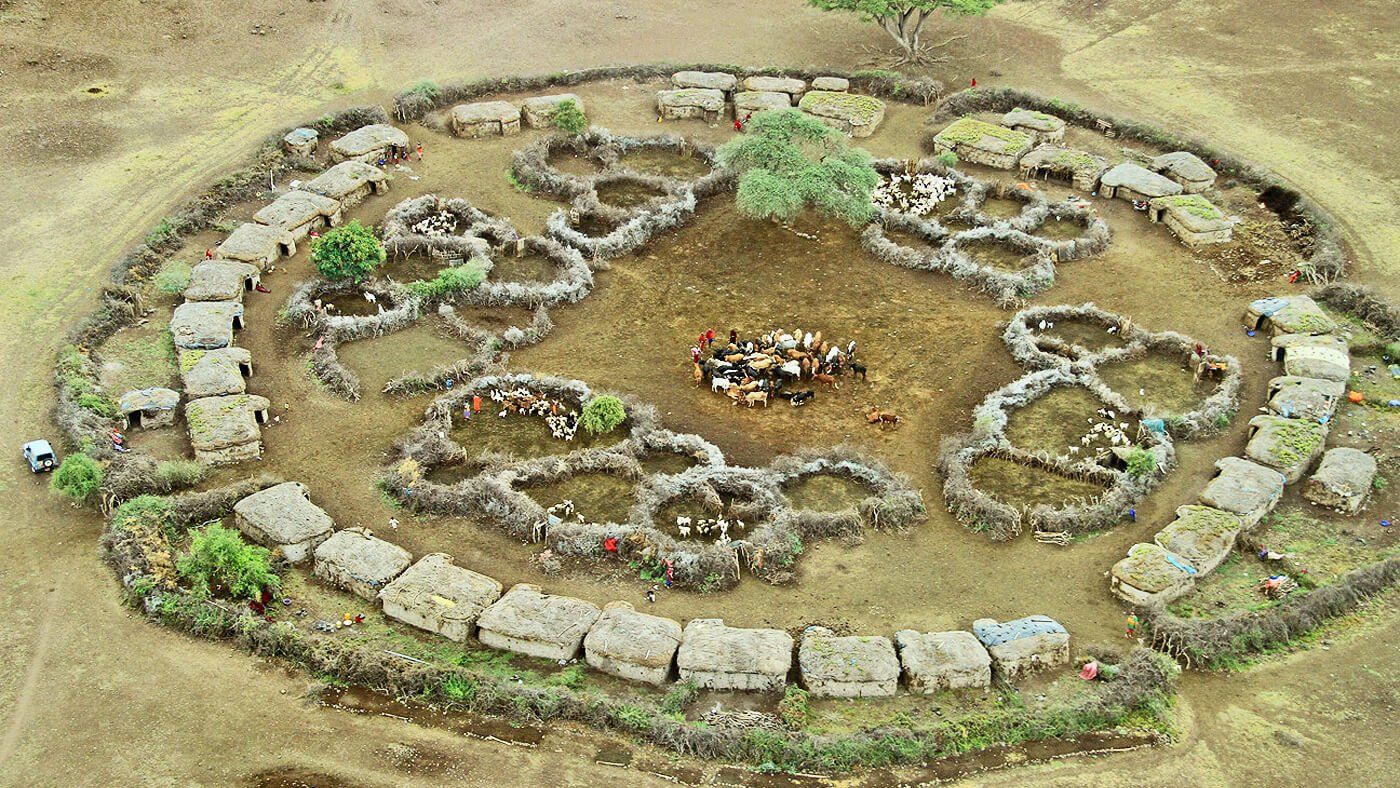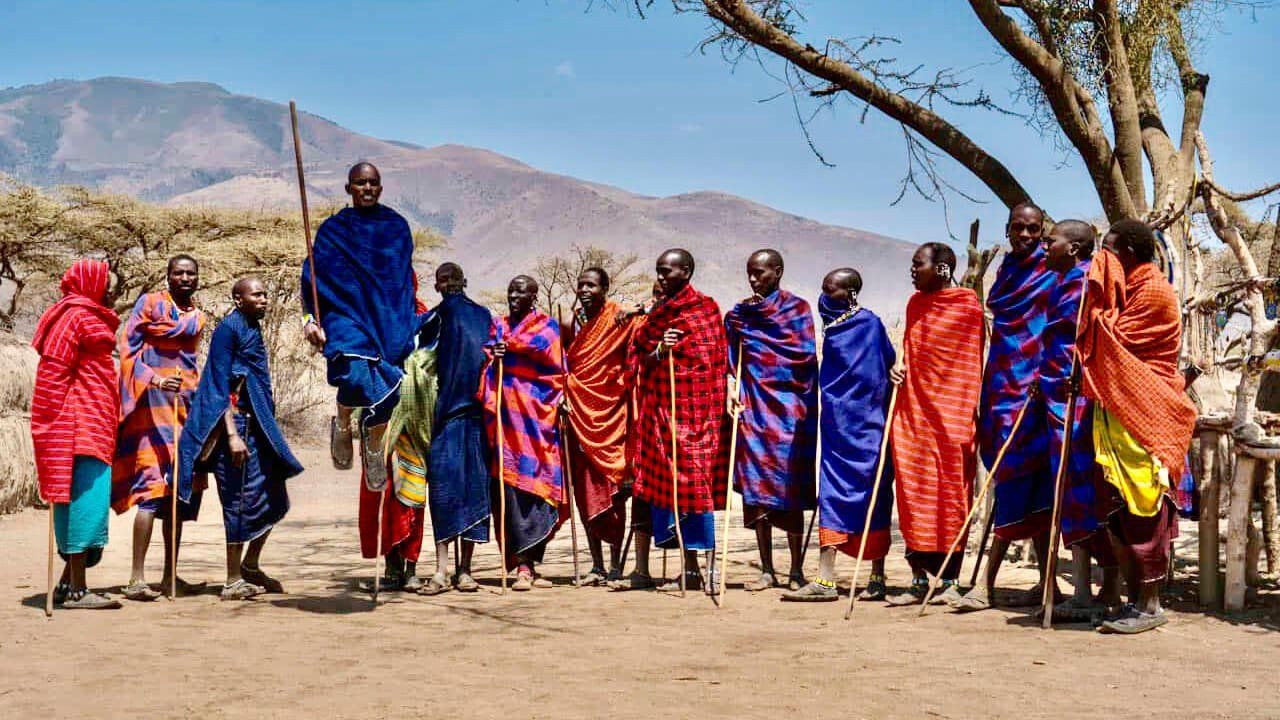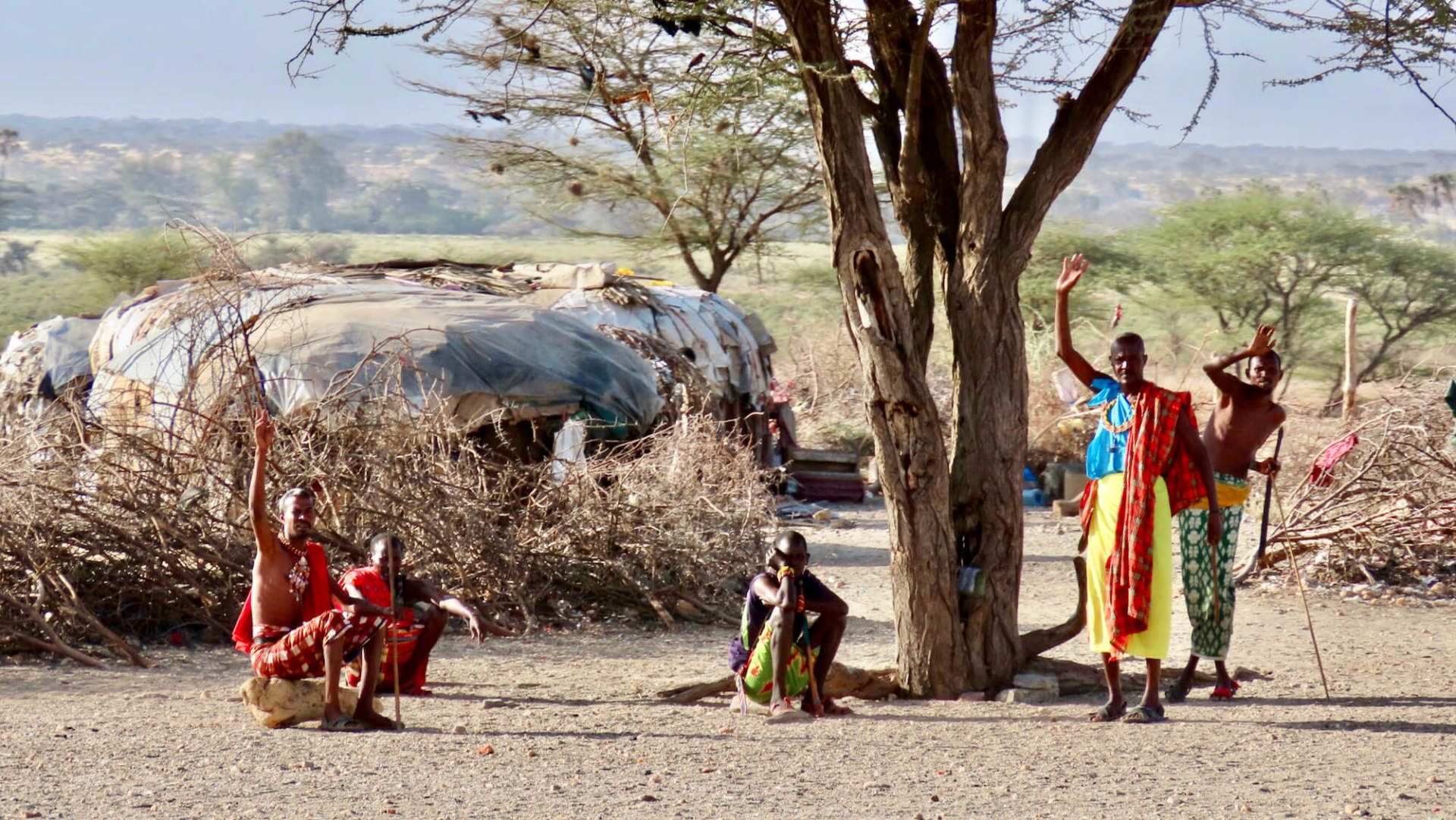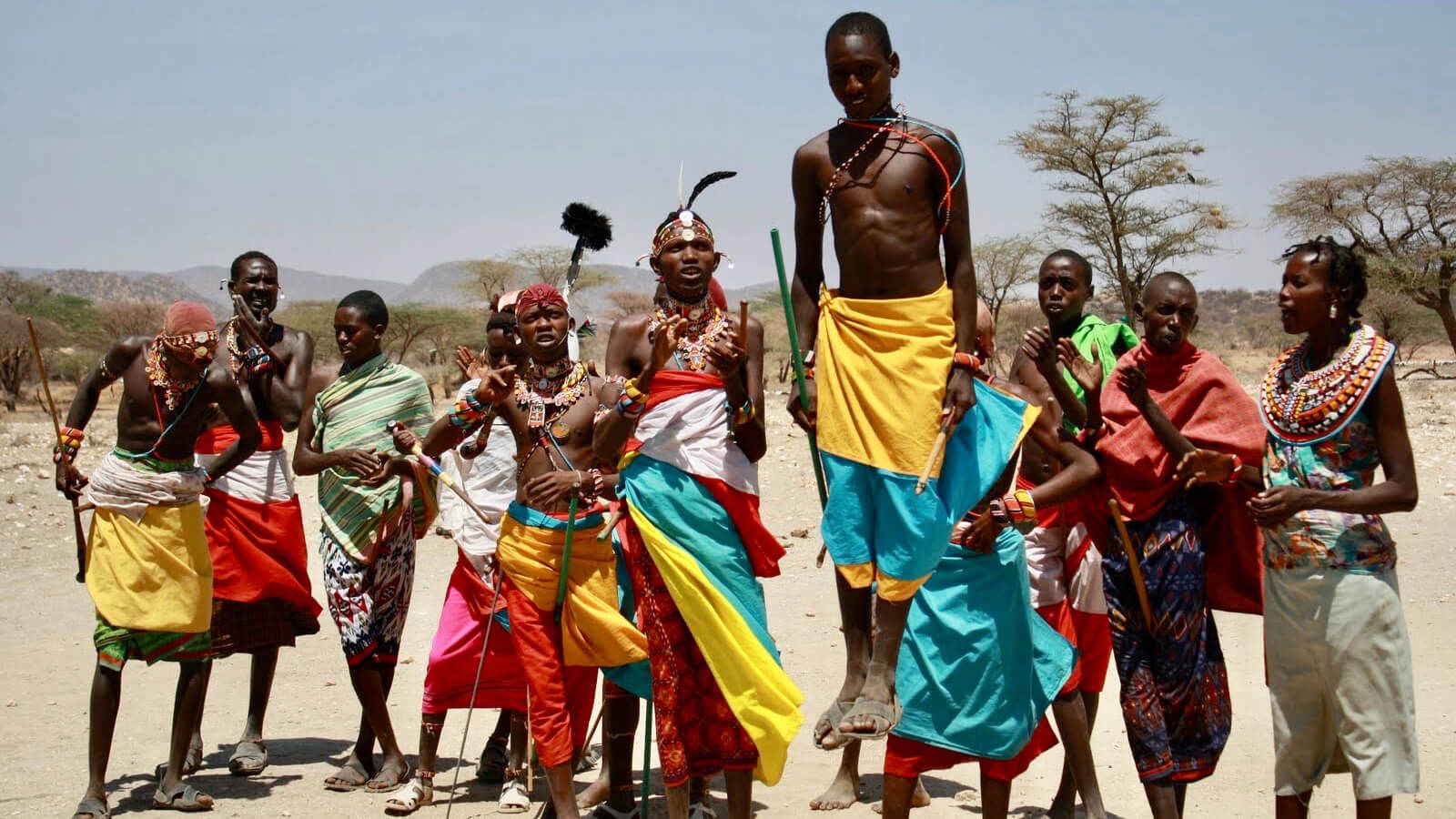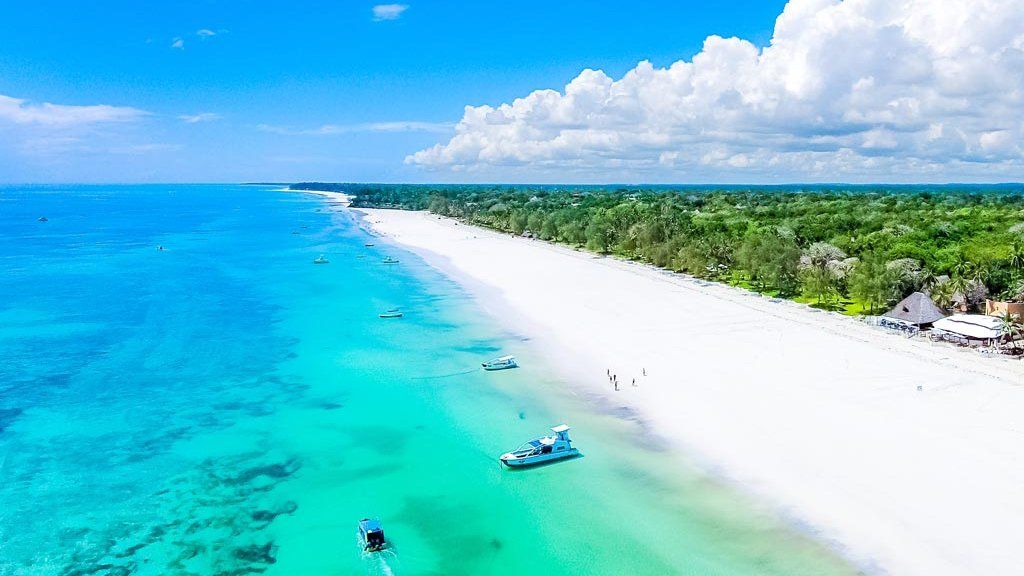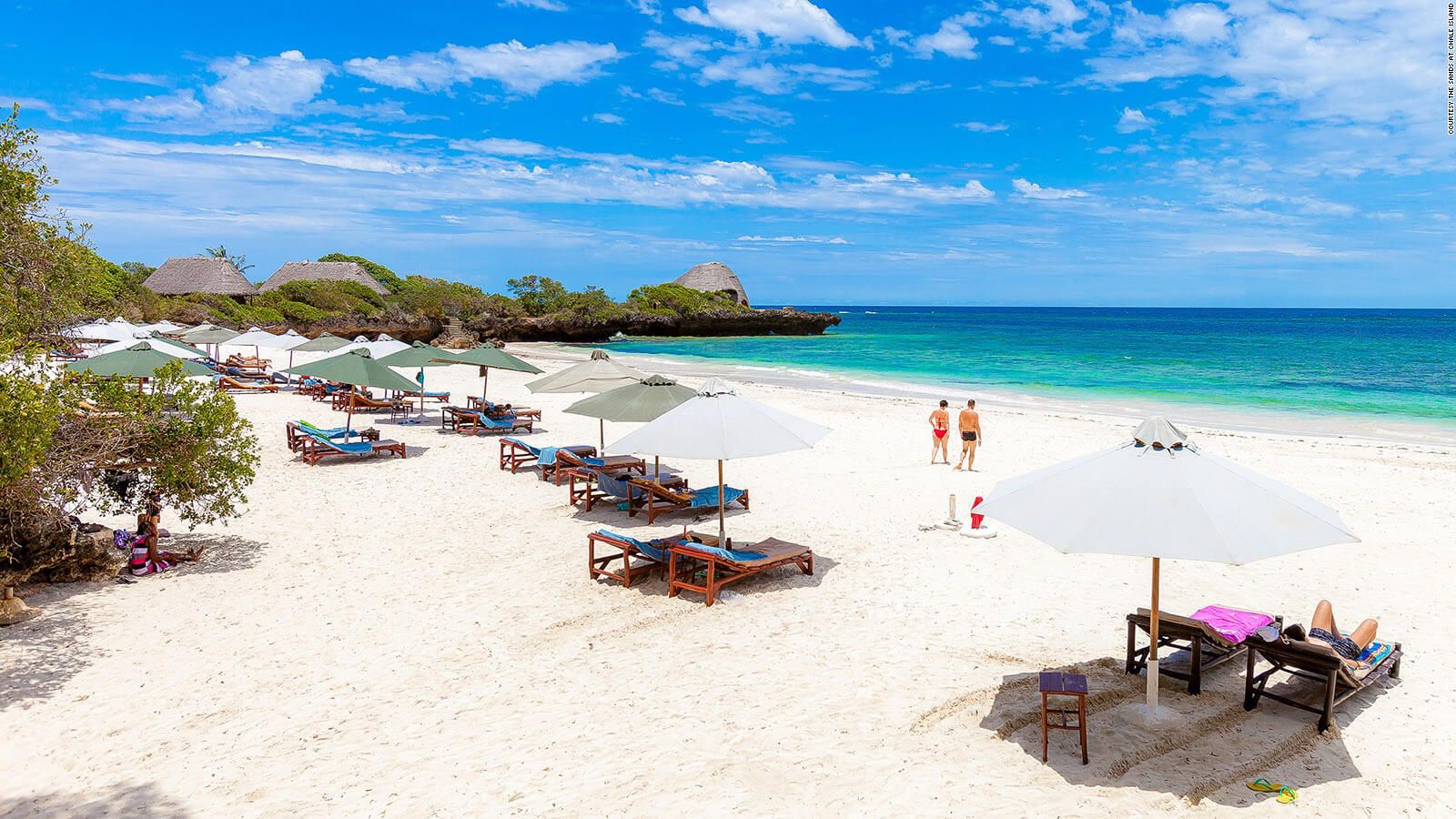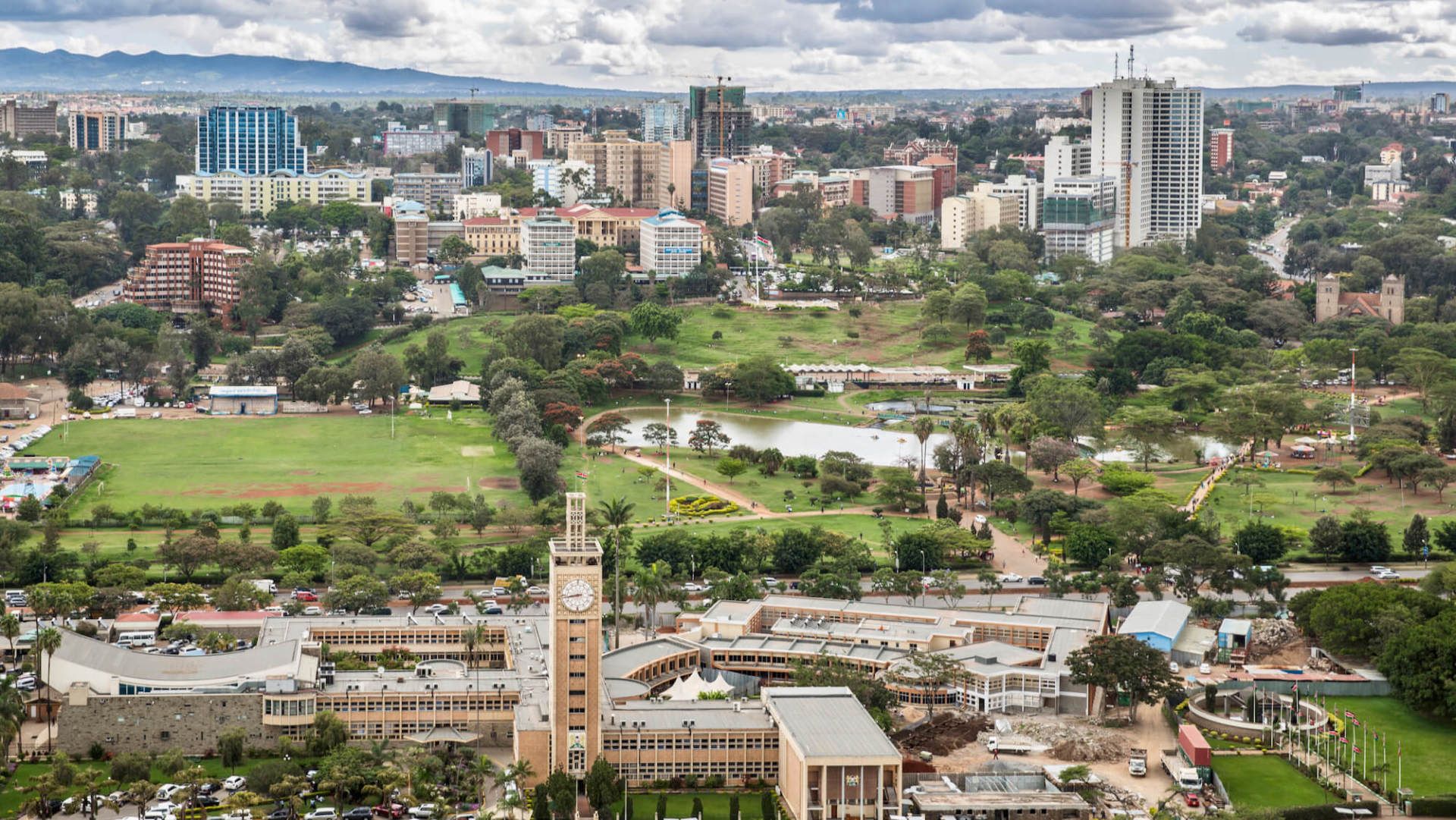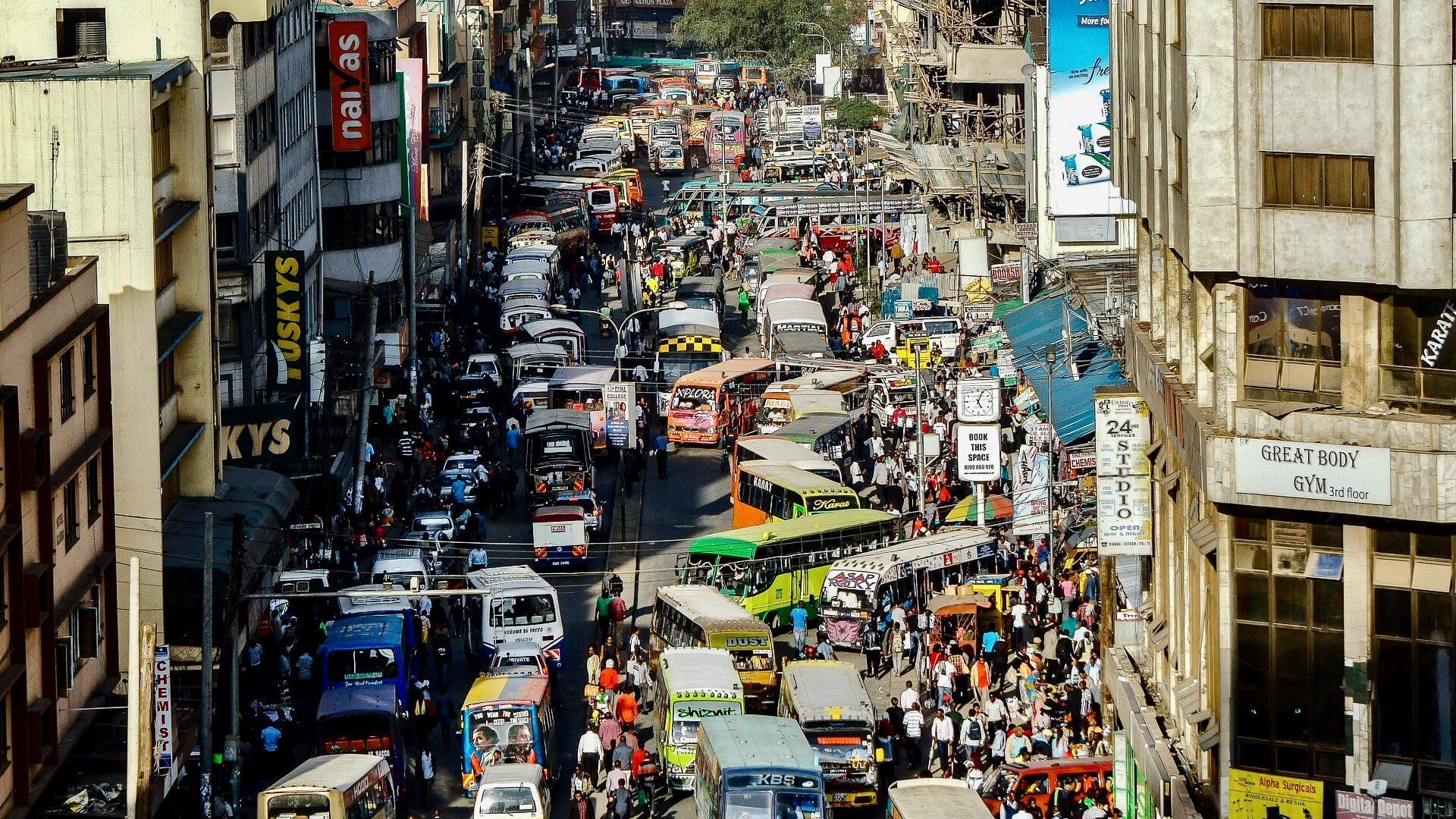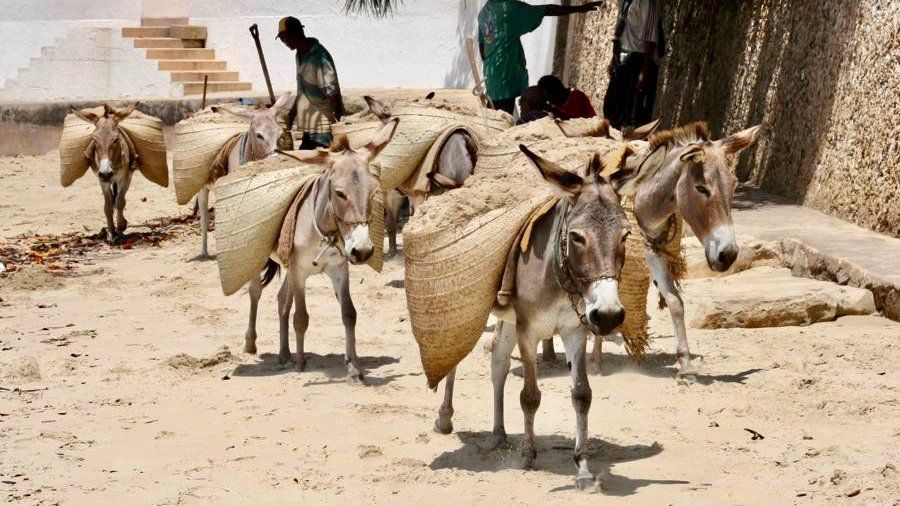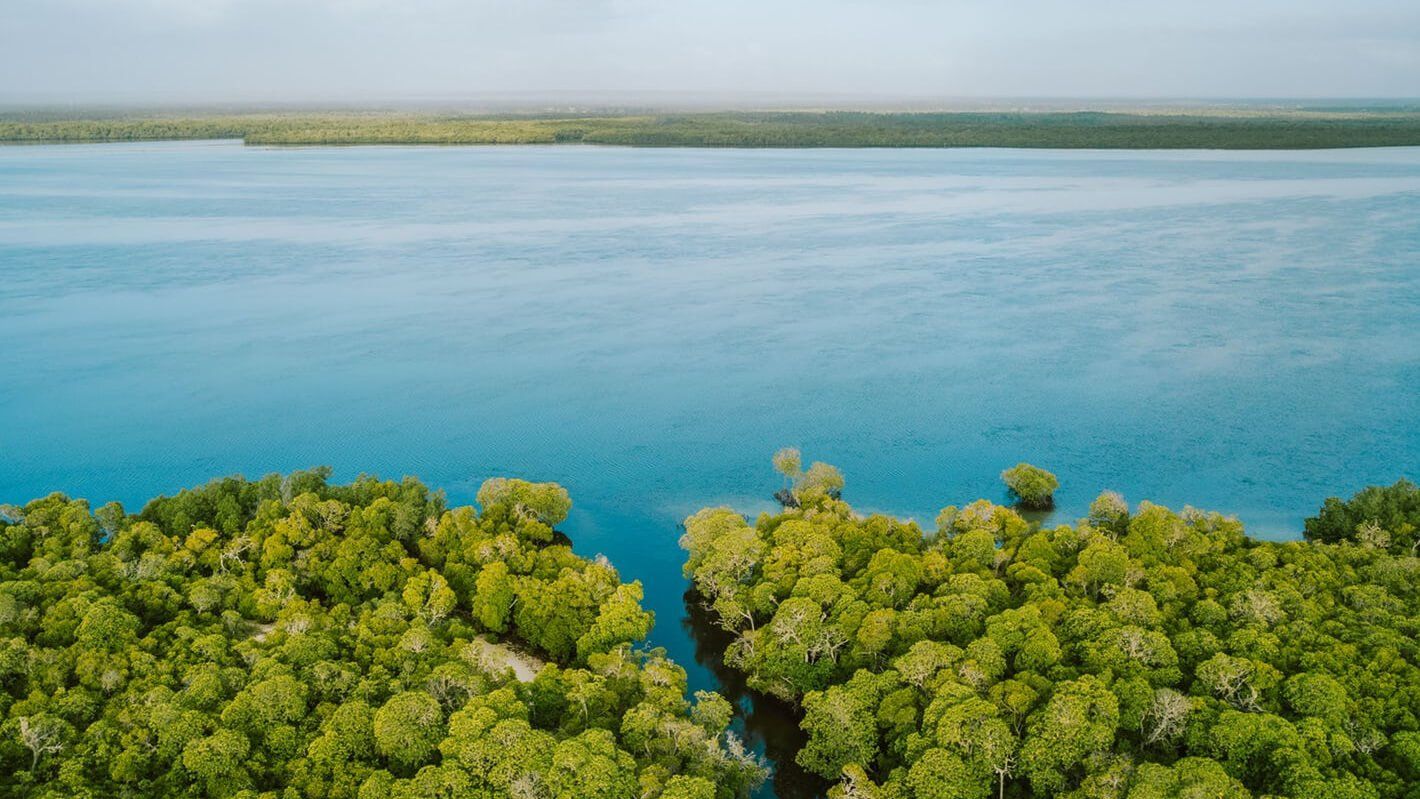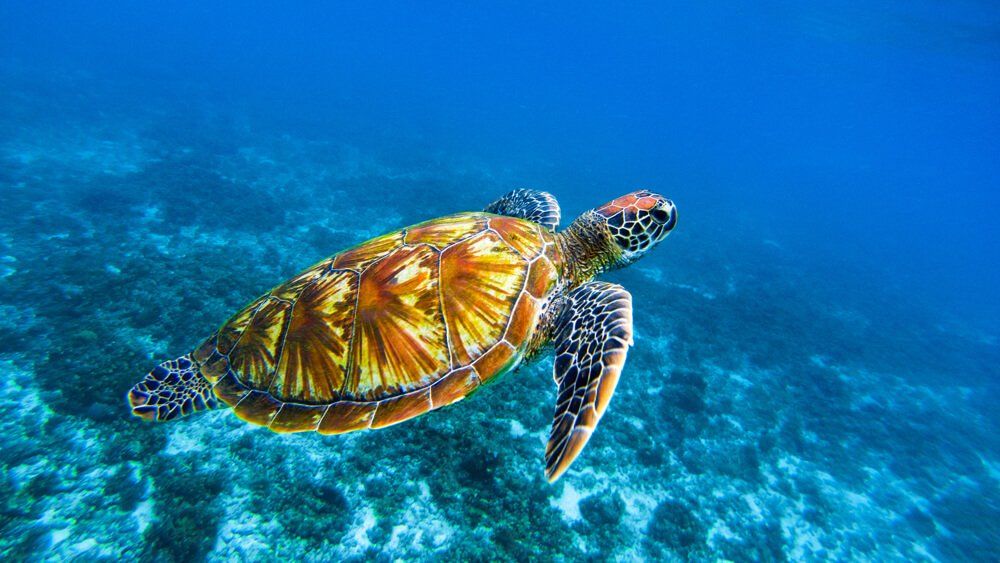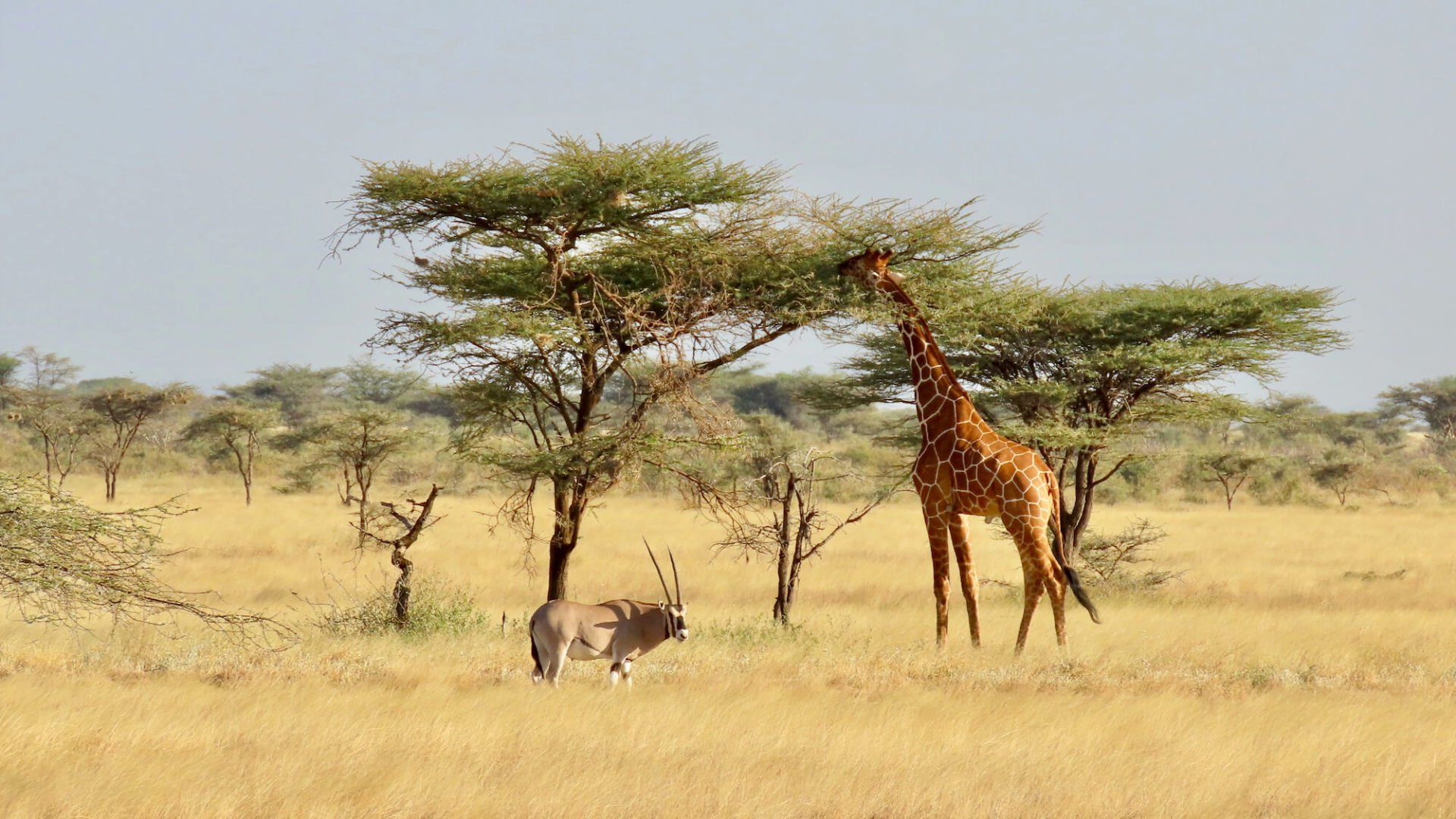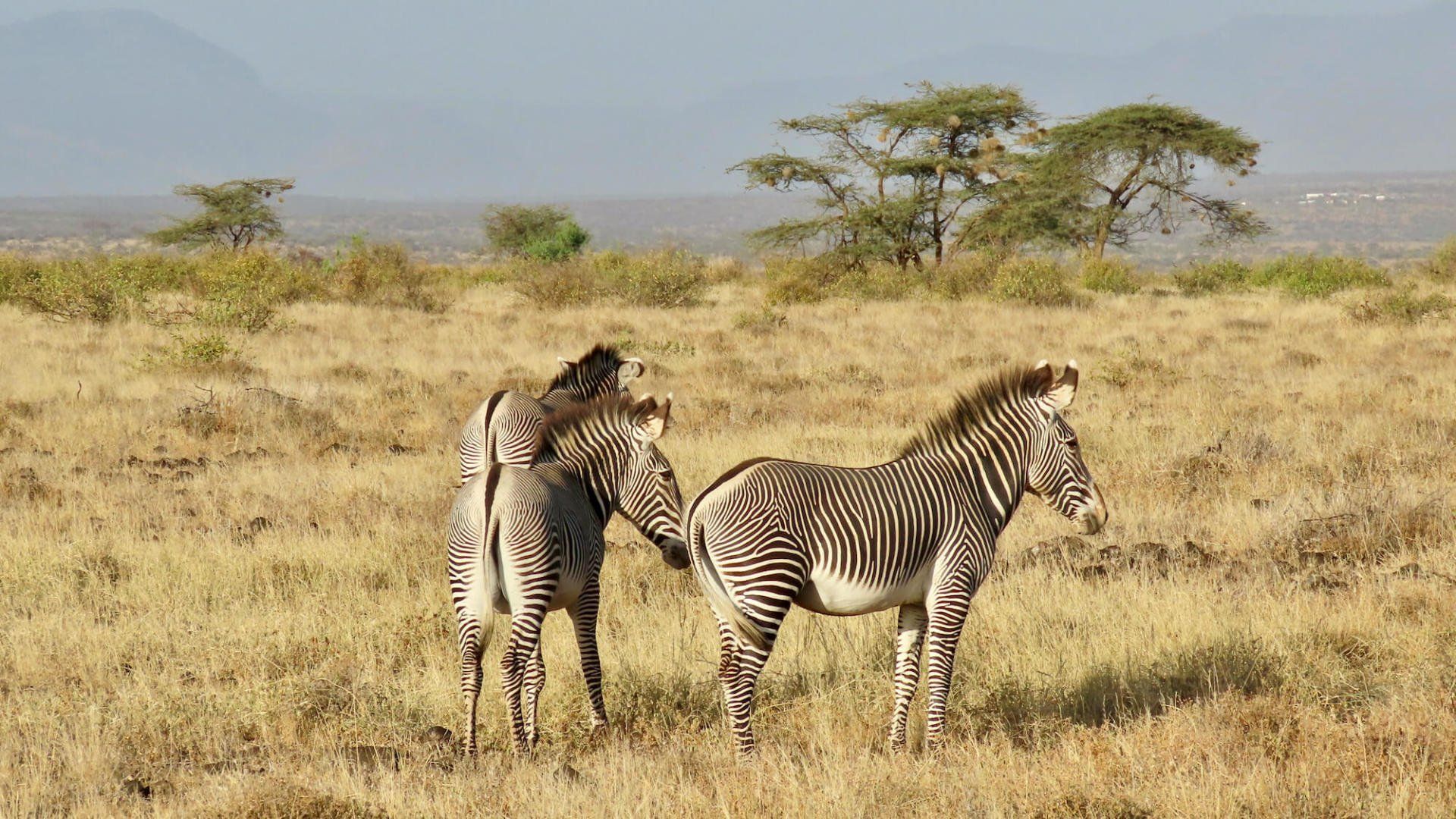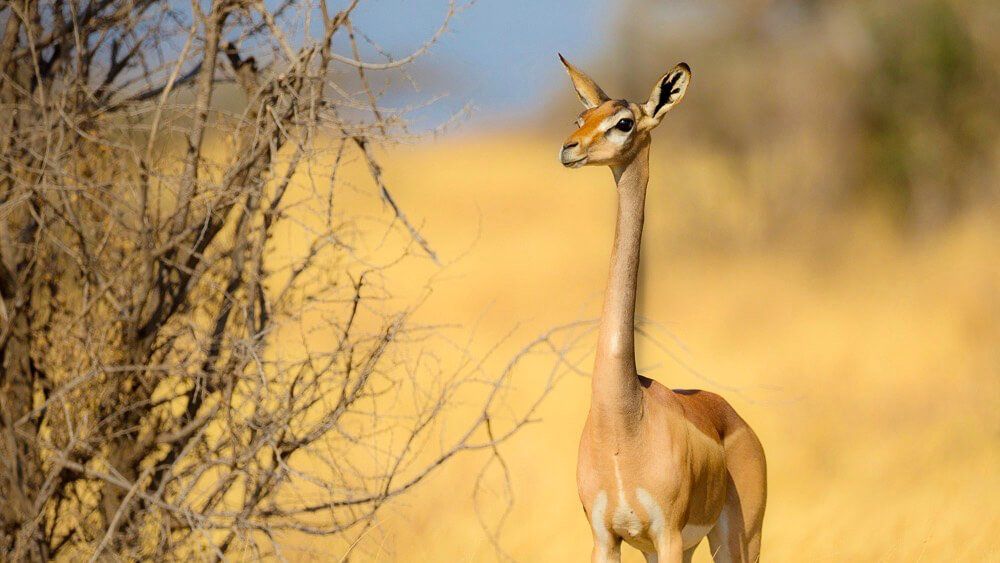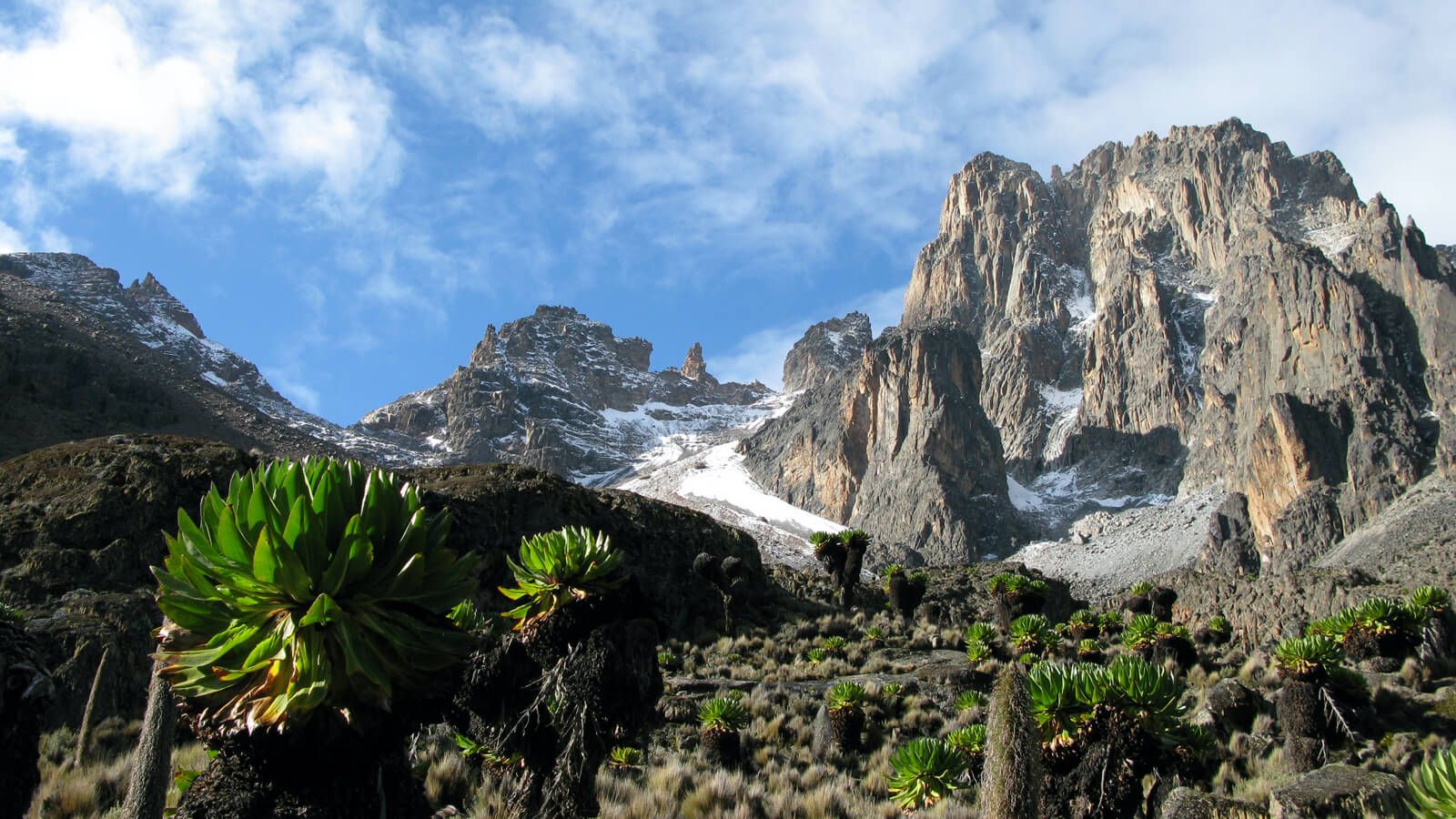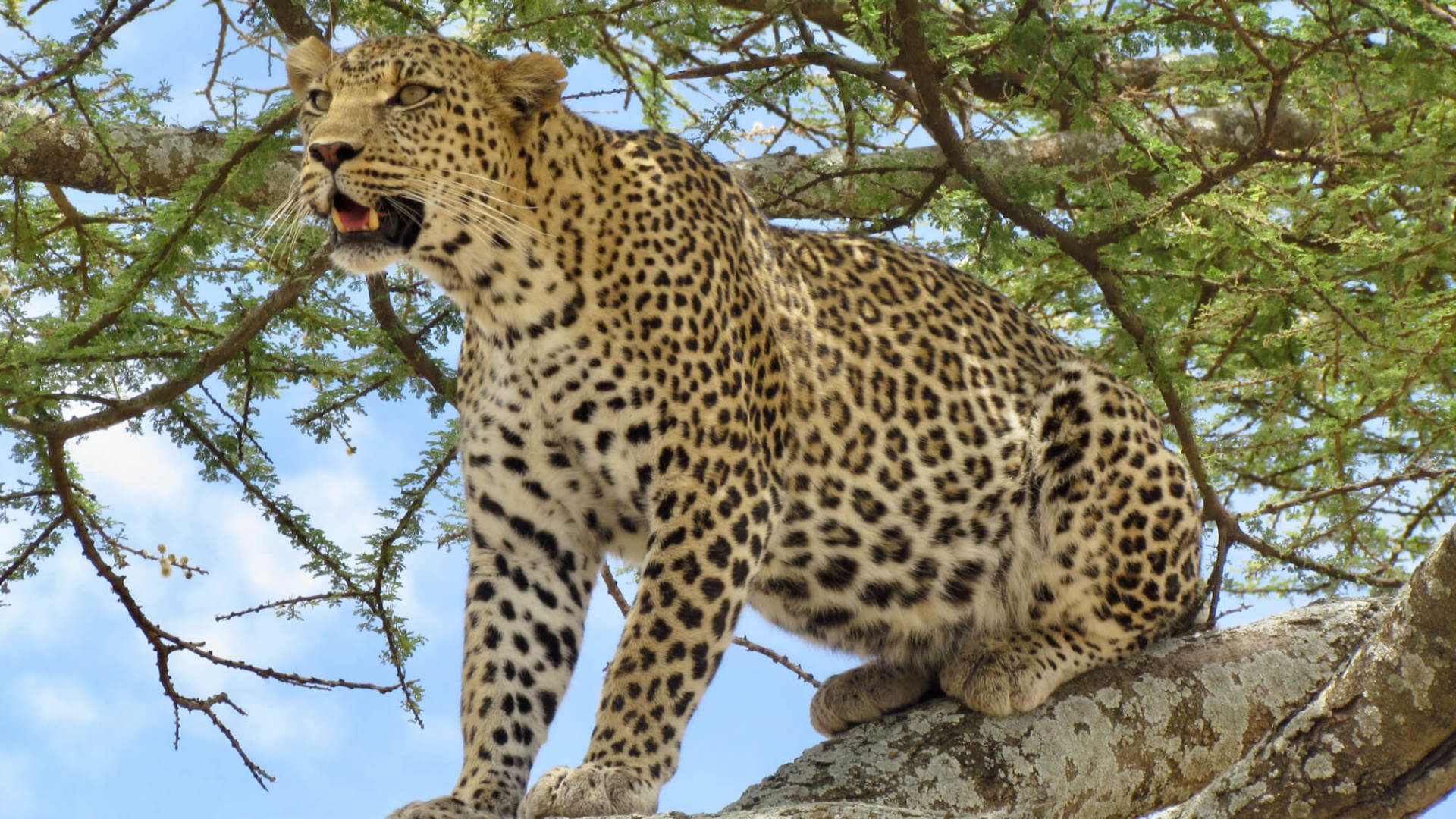Kenya Attractions & Highlights
-
Wildebeest Migration
Africa's Great Migration is one of nature's most spectacular shows, and on of the biggest Kenya tourist attractions, with up to 1.5 million wildebeests and hundreds of thousands of zebras and gazelles moving from the southern plains of Serengeti in Tanzania up to the Masai Mara in Kenya.
Also known as one of the Seven Natural Wonders of Africa, it doesn't have a start or end. It is a dynamic annual cycle with the animals constantly moving across considerable distances in search of fresh, green pastures.
The Masai Mara is known to offer excellent wildlife viewing all year round with an unsurpassed concentration of wildlife. It is home to the Big Five, although black rhinos are quite hard to spot. The Mara is particularly famous for its population of big cats having one of the highest concentrations of lions in the world, as well as large numbers of leopards and cheetahs.
For those looking for an opportunity to witness the great wildebeest migration, the best time to visit the Masai Mara is from end July to October. In June and November, some of the smaller herds that are early or late start crossing the Mara river. River crossing can also be observed at the Talek and Sand rivers.
It is over this period that the wildebeests cross the Mara River to reach the lush grasses of the Masai Mara plains. The herds cross at various points of the Mara River moving from one location to another, crossing and re-crossing the river, looking for new pastures. Crossing points form bottlenecks in which thousands of animals perish through trampling or drowning. Not surprisingly, you will find hyenas, lions, leopards and even cheetahs on the river banks, capitalising on this glut of fresh meat.
The Mara River remains the most significant obstacle to the migration's never-ending cycle, with strong currents and predatory crocodiles lying in wait. Noisy herds bunch up on the riverbank. As soon as the first wildebeest has plunged into the water, the rest of the herd (whose numbers can reach thousands) follows. The Mara River bears witness to some of the most spectacular crossings of the migration.
- Hot Air Balloon Safari
The scenery of the Masai Mara from a hot air balloon is remarkable owing to its spectacular and breathtaking nature. It is the ultimate safari experience. The balloon flight transports you over the diverse habitat of the Masai Mara Reserve - the great Mara River, swamps, forests, wildlife and the African Savannah. The gentle and silent nature of the balloon flight allows passengers to view the wildlife from a comfortable distance. The Big Five (lion, leopard, elephant, rhino and buffalo) are frequently seen, as well as other wild animals like hippos, crocodiles, giraffes, zebras, antelopes, birds and much more.
This unique excursion starts early in the morning with a transfer to the launch site. Here you are briefed by the balloon crew and can watch the huge burners light up the darkness as the balloons are filled. Once you take flight, you start soaring in the company of the rising sun and exotic birds, high above the watchful eyes of easily alarmed wildlife. You will glide gently above the treetops and have a rare opportunity to get a bird' s-eye view of miles of rolling plains and herds of animals that call the Masai Mara home. The flight itself lasts approximately 45-60 minutes (depending on the wind) before you touch down on the plains of the Masai Mara.
In the time-honoured tradition of balloon flights all over the world, your return to earth is celebrated with a champagne breakfast. Enjoy an en-route game drive back to camp to continue game viewing activities for the day.
Several companies in the Masai Mara offer balloon safaris. Balloons range in size from large sixteen-passenger balloons to small eight-passenger balloons.
-
Maasai Tribe
One of the cultural attractions in Kenya is the Maasai tribe. You will see the brightly coloured red, blue and purple of the Maasai tribe’s Shúkas (sheets worn wrapped around the bodies, one over each shoulder, then a third over the top of them) creating an impressive contrast against the landscape.
Kenya recognises over fifty tribes of native people with the Maasai being the dominating tribe. The Maasai are semi-nomadic and pastoral- they live by herding cattle and goats. They are found in semi-arid and arid land in southern Kenya and northern Tanzania along the Great Rift Valley.
The fence around their boma (village) is made of acacia thorns, protecting the tribe from lion attacks on their cattle. It is the men’s responsibility to fence the boma, while women construct the huts. The Maasai people have a patriarchal social structure, with elderly men making most of the decisions. The number of cattle and children a man has determines his wealth and these men often have several wives, each with her own house.
Traditionally, the Maasai rely on meat, milk and blood from cattle for protein and calorie needs. The Maasai language called “Maa”, is spoken but generally not written. Their language, tradition and history have been preserved by carrying it over verbally for centuries.
The Maasai are known for their jumping way of dancing, which is traditionally carried out by warriors. It is called the "adumu"and it is a highly recognisable ritual of Maasai life. There are no drums, only voices as instruments and rhythm. The young men form a semicircle with two men jumping straight up at the centre, each time higher than before, without letting their heels touch the ground. As each one jumps, the others sing a high-pitched song which tone depends on the height of the jump.
The women will gather with a leader, known as the Olaranyani, who initiates singing by starting with the first line. The group will respond with one single call in acknowledgement. Singing is accompanied by body movements and tilting the head back and forth.
"A Maasai warrior is a fine sight. Those young men have, to the utmost extent, that particular form of intelligence which we call chic; daring and wildly fantastical as they seem, they are still unswervingly true to their nature and an inherent ideal. Their style is not an assumed manner, nor an imitation of a foreign perfection; it has grown from the inside and is an expression of the race and its history and their weapons and finery are as much a part of their being as are a stag's antlers."
– Karen Blixen –
- Samburu Tribe
The Samburu is a sub-tribe of the Maasai. They speak a dialect of the Maa language, spoken more rapidly than that of the Maasai, but include many words that are common to both. They are known for their traditional lifestyle, which includes their religious beliefs, rituals and tribal clothing. The Samburu dress in brightly coloured traditional shukas (sheets worn wrapped around the bodies, one over each shoulder, then a third over the top of them). The women adorn themselves in beautiful shukas and multi-beaded necklaces, anklets and bracelets. The Samburu also paint their faces using striking patterns to accentuate their facial features.
They live in north-central Kenya, a beautiful yet rugged sand-swept region with jagged escarpments and spiny acacia trees. They are semi-nomadic pastoralists who have maintained the authenticity of their culture by sticking to their ancient traditions and defying modern trends. The word Samburu is said to translate to butterfly. The Samburu, however, refer to themselves as the Lokop or Loikop.
Warriors dance with a series of spectacular vertical leaps, encouraged by the cries of other warriors. To the hypnotic beat of an ancient chant, women bounce and flaunte their vibrant neck collars made of rope upon rope of delicately strung beads. Men and women do not dance in the same circles, but they do coordinate their dances.
A typical Samburu village usually includes several huts (manyattas) belonging to a group of 5 to 10 families. Their huts are built from mud, hide and grass mats strung over poles and they create a thorny fence around their huts for protection from wild animals. Between the age of about 15 and 30, young Samburu men are traditionally known as Morans. After the circumcision ceremony, the boys enter the age grade of "warrior". During this life, they live separated from the tribe in unique Moran huts. They learn the tribal customs and develop their strength, courage and endurance. The Morans stop cutting their hair at the age of 15 and dye their long hair with red ochre and also decorate themselves with necklaces and feathers.
The traditional Samburu diet consists mostly of milk and sometimes blood from their cows. The blood is collected by making a tiny nick in the cow's jugular and draining the blood into a cup. The wound is then quickly sealed with hot ash. Meat is only consumed on special occasions such as the birth of a child, initiation and marriage. Their cattle are their life, their wealth, their livelihood and the symbol of status and success within the tribe. The Samburu diet is supplemented with roots, vegetables and tubers made into a soup.
The Samburu proudly cherish the tradition and ceremonies of their forbears, unlike most other tribes in Kenya who have been influenced by Western civilisation.
- Kenya Coast
Discover Kenya's biggest secret - 1,420 kilometres of pristine coastline.
Fringed by swaying palm trees on one side and the warm Indian Ocean on the other, the shoreline is lined with coral reefs, making Kenya a superb destination for snorkelling, scuba diving, fishing and kite surfing.
Considered to be the best beach in Kenya, Diani Beach has excellent coral reef and sandbars, creating perfect conditions for swimming, floating or snorkelling. Diani is located about 30km south of Mombasa. It has a good mix of hotels and lodges to offer something for everyone's tastes and preferences. Diani has the lion's share of local eateries, bars and things to do. Other beaches just a few kilometres further south and worth a visit, include Galu and Kinondo.
One of Kenya's most popular coastal getaways, Watamu, is a series of beaches set around cerulean coves on the sandy peninsula that separates Mida Creek from the Indian Ocean.
Located just 15 kilometres south of Malindi, the beach area offers plenty of opportunities for watersports like scuba diving, snorkelling, kite- and windsurfing, sailing and deep-sea fishing. Those more interesed in history, can visit the stone ruins of a medieval Swahili town called Gedi. Flanking the west side of the coast road is Arabuko Sokoke Forest Reserve, a protected area home to a wide variety of animals, from elephants, antelope and its namesake, the Sokoke wildcat.
Kenya could be harbouring many ships wrecked along its coastline in incidents stretching over hundreds of years.
The Ngomeni shipwreck of Portuguese origin, is the oldest shipwreck in Kenya and made its last ill-fated journey in the Indian Ocean waters about 500 years ago. The Ngomeni ship has most of its major components including timber (frames, ribs and the base) still intact. These remains are being converted into an underwater museum.
- Nairobi City
Nairobi doesn't have to be just the city you fly in and out of on your way to a safari in Kenya. This capital city of Kenya, is home to some of the best tourist attractions in the country.
David Sheldrick Wildlife Trust
The David Sheldrick Wildlife Trust Elephant and Rhino Orphanage was founded in 1977 and is renowned as the world's most successful elephant rescue and rehabilitation centre. Located inside the Nairobi National Park, the orphanage is a game nursery that takes care of orphaned elephants and rhinos. You can visit the orphanage and adopt an orphaned animal as a way of supporting the conservation of elephants and rhinos. When visiting this animal rehabilitation centre, you will be able to see some of the world's biggest animals up close.
Giraffe centre
You simply can't miss a visit to the Giraffe centre. It offers one of the most exhilarating experiences in Nairobi, particularly if the giraffe is one of your favourite animals. Established by Jock Leslie-Melville in the 1970s, it is a breeding ground for the rare Rothschild giraffe.
The centre has raised and reintroduced an incredible amount of giraffes into the wild. The highlight of the visit is the opportunity to feed the giraffes and even be thanked with a giraffe kiss!
Karen Blixen museum
Located at the foot of the Ngong Hills, you will find the Karen Blixen Museum. This former farmhouse that was bought by Karen Blixen in 1917, showcases books, movies and furniture owned by the Blixen family. It is a treasure chest of information about Kenya's colonial era and the story of the famous Blixen family. The house was opened to the public in 1986 as one of Kenya's national museums following the popularity of the 1985 movie, “Out of Africa”. The grounds, which feature original equipment from the coffee farm, are also available for touring and the museum has a souvenir shop.
Visit Nairobi National Park
Located only 7 kilometres west of Nairobi city, the national park makes Nairobi the only capital city in the world with a game park. This 117 square-kilometre park was established in 1946 and is home to a wide range of animal and bird species. Animals found in the park include lions, leopards, cheetahs, black rhinos, buffaloes, hippos, hyenas, zebras, giraffes, elands and wildebeests.
Visit the one-of-a-kind Kazuri bead factory
This factory in the Karen Blixen estate started as a small workshop that made small beads. Established in 1975, the Kazuri bead Factory and Pottery Center is still a great place to see and buy local art and crafts. When visiting the factory, you will have an opportunity to see how ceramic beads, pots and leather goods are created.
Nairobi flea markets
Explore Nairobi's flea markets for a variety of exceptional jewellery and household decorations.
Glassware at Kitengela Glass Art
When visitors arrive at Kitengela, they will see sculptures and ornaments adorning the path that leads to the establishment. Also on view are different-mosaic paths and you will see the artisans who make glass into art and decor. Kitengela was started when Nani Croze wanted to generate income by making stained glass items. She had to improvise as there was a shortage of glass in town. Nani started using recycled motor oil for fuel and window glass, recycled used bottles of all kinds and even used broken household glass items to create her products. The sought after, unique character of the products at Kitengela is evidence of the success she has had and is still having.
- Lamu Island
The Lamu Archipelago is a small group of islands situated on Kenya's northern coastline, with Lamu Town being the oldest Swahili town in Kenya and a UNESCO World Heritage Site. Lamu Island is one of the world's most unique islands and cars are not permitted. Donkey carts, stone buildings, mosques and forts line the cobbled streets where ancient traditions and Swahili customs abound.
The island is a beautiful place of rolling dunes and endless beaches, where tiny villages nestle among coconut and mango plantations and lateen sailed dhows ply the waters. Dense mangrove forests fringe the mainland and the inland areas of the island. Lamu island boasts some of the most spectacular beaches with layers of white sand, traditional dhows and a pristine appearance. The most significant of these beaches is situated close to Shela village and consists of 12km of empty sands backing on to an ocean protected by a reef.
Spices and the smell of grilled food scent the air around the markets, museums, fort and ancient houses. The winding streets of the towns are best explored on foot or by donkey while shopping for local woodcarvings and batik.
Lamu is the land of dhows. Dhows are the cheapest mode of transport, used to ferry people from Lamu beach to Shela beach and Manda Island, all the way to Kiwayu Island right next to Kiunga Marine National Reserve.
- Watamu Marine Park
Watamu Marine Park is a spectacularly diverse aquatic ecosystem along Kenya's north coast with over 100 types of coral, 600 fish species and many other marine creatures like dugongs and turtles. No wonder it is a sought after underworld destination amongst snorkelers and divers. The reef here is close to shore, offering easy accessibility to shallow coral gardens. The outer reef has some beautiful drop-offs, with sheer walls and massive brain corals attracting consistently abundant sea life.
Things you can look forward to when visiting the park:
- Whale sharks passing through from October to February, with good sightings reported each day.
- Migratory pods of humpback whales from June to September, often seen breaching in deep water beyond the reefs.
- You will occasionally see a few white-tip reef sharks as they reside in the reef.
- This area is a vital egg-laying site for the endangered green sea turtle.
- The coral at Moray Reef is a refuge for octopus and eel. The sharp reef edge has plenty of nudibranchs, angelfish, tang and the occasional grouper or barracuda.
- The canyon is an excellent all-round dive site and is bordered on each side by deep drop-offs. There is an impressive arch covered with soft corals and the reef walls are always alive with trevallies and snapper.
- Samburu Special 5
Kenya's Samburu Special 5 are almost exclusively found in Samburu National Park which lies approximately 6 hours north of Nairobi and a must-visit. All kinds of wildlife exist in this wilderness. Still, the most interesting are the special five herbivores found north of the equator: Grevy's zebra, gerenuk, reticulated giraffe, Beisa Oryx and the Somali ostrich.
Reticulated giraffe, also known as the “Somali giraffe”, has striking red coats, divided by complex networks (reticulations) of clean white lines and they look very different to giraffes on the rest of the continent. Over the past century, their numbers have declined so drastically that they are now at risk of extinction.
Grevy's zebra is taller than the common zebra and they have narrow stripes, a white belly, black dorsal stripe, large rounded ears and a brown muzzle. These zebras can go without water for up to 5 days.
Gerenuk, meaning "giraffe-necked" in Somali, is a notably tall, slender antelope that resembles gazelles. This antelope is characterised by its long, slender neck and limbs, flat wedge-like head and large, round ears. The gerenuk's diet consists of leaves, shoots from prickly bushes and trees, flowers, fruits and buds and they don’t need to consume grass. Gerenuks derive all the water they need from the plants they eat.
The Beisa Oryx of East Africa have shorter horns than the gemsbok and lack the black flank stripes. Apart from that, the animals look much the same.
You can easily distinguish between a Somali ostrich and a common ostrich by looking at their appearance and habitat. Somali ostriches are found in scrub areas, not open plains and they live by themselves or in pairs instead of small flocks. Their plumage is darker than common ostriches and they have a blue-grey neck and legs instead of pink (common ostrich). Another difference between these ostriches are that the Somali ostrich doesn’t have the white ring at the base of their neck as is typical of the common ostrich.
-
MASAI MARA GROUP SAFARI
VIEW ITINERARYGROUP SAFARI
6 days / 5 nights
Highlights: Lake Elmenteita / Masai Mara Nature Reserve
Date: 23 - 28 Aug 2024
-
K1 ULTIMATE KENYA SAFARI
VIEW ITINERARY8 days / 7 nights
Highlights: Samburu NP / Lake Naivasha / Masai Mara NR
Date: Private Safari
-
MT KENYA CLIMB
VIEW ITINERARY7 days / 6 nights
Highlights: Sirimon / Chogoria Route
Climb: 5 days
Date: Private climb
-
BEST OF EAST AFRICA SAFARI
VIEW ITINERARY13 days / 12 nights
Highlights: KENYA - Lake Naivasha / Masai Mara / Amboseli NP
TANZANIA - Serengeti NP / Ngorongoro Crater / Lake Manyara
Date: Set departure dates
What Our Clients Say About Our Safaris & Tours
SIGN UP FOR OUR NEWSLETTER
Africa is calling – Sign up to our newsletter today!Get exclusive access to the latest on exclusive offers, getaways and travel inspiration.
Contact Us
We will get back to you as soon as possible
Please try again later
Copyright © 2023 Digital Zoo Website Design Company - All Rights Reserved
Domain Registration
|
Email Address
|
Website Design
|
Graphic Design
|
Social Media Management
|
Search Engine Optimization
|
Online Marketing
|
Web App Developer
All Rights Reserved | Explore Plus Travel & Tours
All Rights Reserved | Explore Plus Travel & Tours
